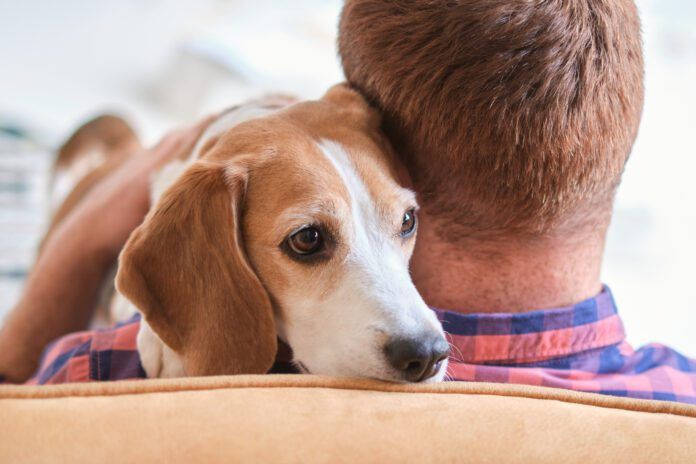
Most dog owners don’t need a scientific study to tell them that dogs can pick up on—and be affected by—the emotions of the humans around them. If I’m having a rough day, I can fully expect to find a chin on my knee and big, worried brown eyes gazing up at me. Even if I think I’m hiding my stress well, maintaining a normal routine, and interacting with my dogs as I usually do, the dogs respond.
It makes sense that my dogs would know me well enough to catch on to my emotional state. We live our lives together and I’m their primary handler and caregiver—they’ve had plenty of time to figure out what’s normal for me. But how quickly do dogs pick up on stress in someone they don’t know? Pretty darn quickly from what I’ve seen. Just watch a therapy dog at work.
Beyond my anecdotal observations, canine responses to human stress were documented in a recent study led by the University of Bristol. Published in July 2024, the study found that “dogs experience emotional contagion from the smell of human stress, leading them to make more ‘pessimistic’ choices.”
To determine ‘optimistic’ and ‘pessimistic’ reactions, researchers started by teaching the dogs participating in the study that a food bowl placed in one location always had a treat in it while a bowl placed in another location was always empty. From there, they put bowls in spots between the two original locations and waited to see how quickly the dogs went to go check the new bowls for treats. According to the study, “a quick approach reflected ‘optimism’ about food being present in these ambiguous locations—a marker of a positive emotional state—whilst a slow approach indicated ‘pessimism’ and negative emotion.”
Trials were then done to see how quickly the dogs approached a bowl in an ambiguous location when there were no additional scents present and after the dogs were exposed to “sweat and breath samples from humans in either a stressed (arithmetic test) or relaxed (listening to soundscapes) state.”
Researchers found that dogs exposed to the smell of stressed human were slower to approach ambiguously located bowls, especially those nearer the empty bowl location. The smell of relaxed human seemed to have no effect. Interestingly, the study noted that “the team also found that dogs continued to improve their learning about the presence or absence of food in the two trained bowl locations and that they improved faster when the stress smell was present.”
“Dog owners know how attuned their pets are to their emotions, but here we show that even the odour of a stressed, unfamiliar human affects a dog’s emotional state, perception of rewards, and ability to learn,” says the paper’s lead author, Dr. Nicola Rooney. “Working dog handlers often describe stress travelling down the lead, but we’ve also shown it can also travel through the air.”
While the study’s conclusions didn’t surprise me, I found it to be a good reminder to pay attention to how much stress my dogs may be picking up from me and other people around them. While stress is often unavoidable, it’s worth remembering that, especially if things have been unusually tense for a few days, it may be time for a quiet walk around the neighborhood, gentle brushing, or other calming activity. It’ll be good for dog and human both.


